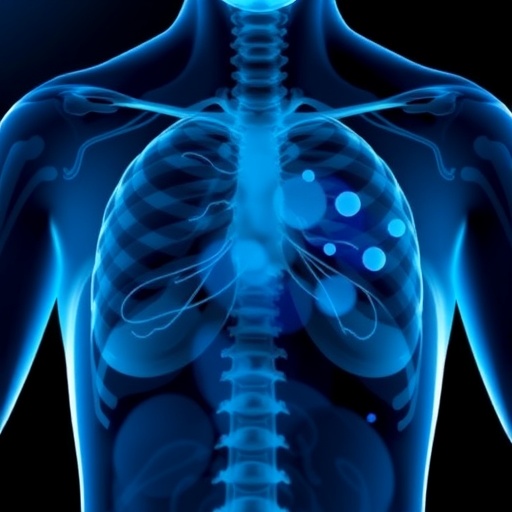Carbon disulfide (CS2) is a compound that has intrigued chemists and researchers for decades due to its unique chemical properties and diverse applications. The study of CS2 offers profound insights into organic chemistry, materials science, and environmental science. As a colorless, volatile liquid with a characteristic sweet odor, its molecular structure comprises one carbon atom and two sulfur atoms bonded together. This simple composition belies the complex chemistry and reaction pathways that CS2 engages in, particularly under different environmental conditions.
The ability of CS2 to dissolve various organic compounds marks its significance in numerous industrial processes. It’s primarily utilized as a solvent in the manufacturing of rayon, cellophane, and certain plastics. Furthermore, its chemical behavior under various conditions can lead to the production of valuable chemicals such as thiocarbonates and dithiocarbamates, compounds that are of interest in agriculture and pharmaceuticals. This versatility underscores the importance of understanding its reactivity and the pathways it undergoes during chemical transformations.
The chemistry of CS2 is principally dominated by its electron-rich characteristics and the capacity to participate in nucleophilic reactions. These reactions are not only foundational to synthetic organic chemistry, but they also reveal the compound’s potential in facilitating various reaction mechanisms. The stability of CS2 as a molecule allows it to function as an effective carbon transfer agent in synthetic pathways, leading to the formation of more complex molecular structures. Research continues to unveil its utility in the synthesis of innovative materials that harness its distinctive chemical attributes.
One of the most significant concerns surrounding CS2 is its environmental impact and potential toxicity. Understanding the pathways through which CS2 participates in atmospheric chemistry is crucial for developing strategies to mitigate its adverse effects. When released into the atmosphere, it can react with various environmental species, contributing to the formation of secondary pollutants. Such reactions can influence climate patterns and air quality, highlighting the urgent need for extensive research into its environmental fate and transport.
Recent advancements in analytical chemistry have enabled researchers to monitor CS2 levels with greater accuracy, leading to improved understanding of its environmental dynamics. Utilizing sophisticated techniques such as gas chromatography and mass spectrometry, scientists can trace the fate of CS2 in various ecosystems. Gaining this knowledge is vital for formulating environmental regulations and strategies to limit the release of CS2 into the atmosphere.
In addition to environmental research, CS2 has gained attention in the field of health sciences due to its neurotoxic effects when inhaled. Occupational exposure has been a matter of concern in industries that extensively use CS2. Understanding its interaction with biological systems is crucial for establishing safety guidelines and preventing health hazards among workers. Recent studies have demonstrated how CS2 may induce cellular stress, leading to detrimental effects on cellular function. Continued research in this domain remains essential for determining the long-term implications of exposure.
The potential applications of CS2 in developing new materials are immense. Fields such as nanotechnology have begun to explore its use in fabricating nanomaterials, where CS2 acts as a precursor for sulfur-containing compounds. These materials exhibit remarkable properties, such as enhanced chemical stability and unique electrical conductivity, setting the stage for groundbreaking applications in electronics and energy storage. The realms of material science and nanotechnology are thus ripe for exploration, potentially leading to innovations that could transform various industries.
Moreover, futuristic research focuses on the role of CS2 in sustainable energy applications. Strategies are being developed to utilize CS2 in catalytic processes for converting carbon-containing feedstocks into clean fuels. By harnessing its carbon atoms, researchers aim to create value-added products in a more sustainable manner. This echoes a larger movement within the scientific community aimed at shifting from fossil fuels toward renewable energy sources.
As interdisciplinary studies continue to emerge, collaboration between chemists, environmental scientists, and health professionals is paramount. The multifaceted nature of CS2 demands a holistic approach to comprehend its chemistry fully, its environmental repercussions, and its health impacts. Global efforts must focus on establishing a comprehensive understanding of carbon disulfide to effectively harness its potential while safeguarding human health and the environment.
Furthermore, the increased interest in geopolitical implications surrounding CS2 cannot be ignored. As different nations approach their chemical industries and environmental policies, the trade and regulation of substances like CS2 may play a crucial role in international relations. Research into CS2 must not only delve into scientific inquiries but also consider socio-economic and political factors that can influence its utilization and management across borders.
In conclusion, the future of research on carbon disulfide (CS2) is bright, propelling diverse fields of science forward. Its intricate chemistry is a microcosm of larger scientific pursuits that encompass innovation, environmental stewardship, and health safety. Continuous exploration of its reaction pathways will reveal more applications, challenges, and opportunities, solidifying CS2‘s pivotal role in both contemporary and future scientific landscapes. The impactful potential of this simple compound is a vivid reminder of how even the most unassuming chemicals can wield a profound influence on our world.
This landscape requires a melding of theoretical groundwork and practical applications, ensuring that the findings of academics and industrial practitioners align. Ultimately, the journey toward a more comprehensive understanding of CS2 will echo in the advancements of society’s collective ability to manipulate chemical building blocks for a sustainable future.
Subject of Research: Carbon disulfide (CS2) chemistry and reaction pathways
Article Title: Carbon disulfide (CS2): chemistry and reaction pathways
Article References: Hajinasiri, R. Carbon disulfide (CS2): chemistry and reaction pathways. Mol Divers (2025). https://doi.org/10.1007/s11030-025-11397-y
Image Credits: AI Generated
DOI: https://doi.org/10.1007/s11030-025-11397-y
Keywords: Carbon Disulfide, Chemistry, Environmental Science, Toxicity, Nanotechnology, Sustainable Energy, Reaction Pathways
Tags: carbon disulfide chemistrycarbon disulfide in pharmaceuticalschemical properties of CS2environmental implications of CS2industrial applications of carbon disulfidemolecular structure of carbon disulfidenucleophilic reactions in organic chemistryorganic solvents in manufacturingreaction pathways of CS2significance of carbon disulfide in materials sciencestudying solvents in organic chemistrythiocarbonates and dithiocarbamates





